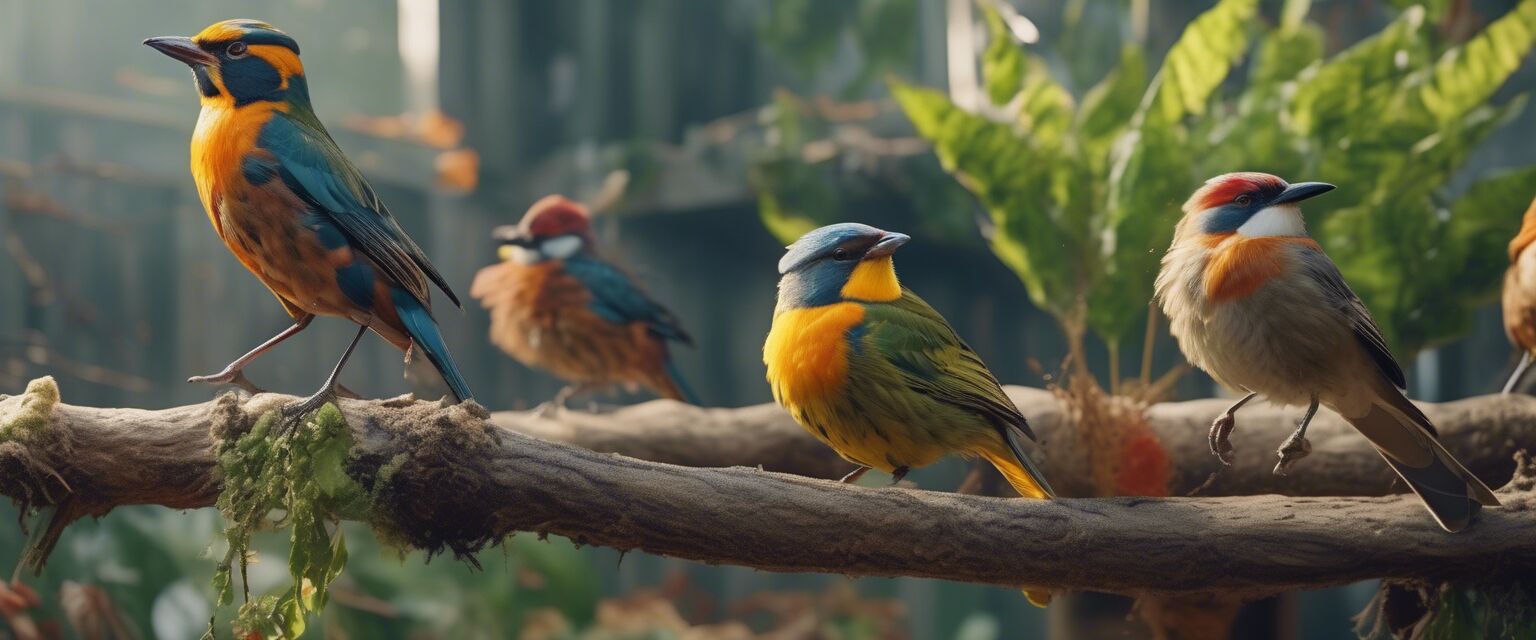
How avian rehabilitation is evolving in 2025
- New technologies are transforming how injured birds are treated and cared for.
- Veterinary practices are evolving with a focus on mental health and well-being.
- Community involvement plays a crucial role in rehabilitation efforts.
- Environmental factors are increasingly considered in rehabilitation methods.
- Innovations in training techniques enhance recovery outcomes.
The field of avian rehabilitation is witnessing remarkable changes as we delve into 2025. New methods and technologies are making it easier to rescue, treat, and rehabilitate injured or abandoned birds. This article explores the latest trends, encompassing advanced veterinary practices, community involvement, and more, providing insights into how these developments can enhance the care for our feathered friends.
Emerging technologies in avian rehabilitation
One of the biggest shifts in avian rehabilitation revolves around the application of technology. Here are some notable advancements:
- Telemedicine: Allows rehabilitators to consult with veterinary specialists remotely, ensuring timely and effective treatment.
- Monitoring devices: Wearable technology for birds helps track their recovery progress in real-time.
- Rehabilitation software: Digital systems are now being used to manage cases and keep detailed records, aiding in future research and recovery strategies.
Telemedicine: A game changer for bird care
With the rise of telemedicine, avian rehabilitators can now reach out to experts from anywhere in the world. This has become vital for remote areas where access to avian veterinary care might be limited. By facilitating better communication and rapid diagnosis, birds can receive prompt attention, improving their chances of recovery.
Focusing on mental health and well-being
In 2025, there has been an increased focus on not just the physical rehabilitation of birds, but also their mental health. Understanding that birds experience stress during rehabilitation has led to the incorporation of various techniques aimed at promoting psychological well-being:
- Creating more enriched environments that mimic their natural habitats.
- Implementing socialization practices that allow birds to interact with others, reducing anxiety.
- Utilizing soothing sounds and visual stimuli to create a comforting atmosphere during recovery.
Environmental considerations in rehabilitation
Environmental factors now play a crucial role in the success of rehabilitation efforts. By recognizing the importance of habitat preservation, more rehabilitators are advocating for:
- Releasing birds back into their native habitats instead of general release locations.
- Assessing habitat conditions before release to ensure sustainability.
- Involving local communities in habitat restoration projects, thus fostering support for conservation efforts.
Community involvement and the role of volunteers
Community involvement has become a fundamental pillar of avian rehabilitation. Local volunteer programs are thriving, promoting awareness and support for injured birds. Some trends in community involvement include:
- Workshops and training programs for local residents on bird rescue techniques.
- Collaboration with schools and educational institutions to raise awareness.
- Public campaigns to encourage responsible pet ownership and protection of wild birds.
Harnessing the power of volunteer networks
Building a network of passionate volunteers has made a significant difference in rehabilitation efforts. Volunteers not only help with day-to-day tasks but also spread the word about rehabilitation needs, which helps in gathering more resources and spreading awareness.
Innovative training techniques
Innovations in training techniques tailored for rehabilitating birds have emerged in 2025. These techniques aim to facilitate better recovery and integration into the wild:
- Positive reinforcement: Training that rewards desired behavior is enhancing recovery methods.
- Flight training: Gradually reintroducing flying skills to birds before release helps ease the transition.
- Behavioral assessments: Understanding individual bird needs allows for customized rehabilitation programs.
Positive reinforcement approaches
Positive reinforcement techniques are being increasingly adopted in avian rehabilitation. They foster a sense of trust between rehabilitators and birds, ultimately leading to more successful recovery outcomes.
Conclusion
The landscape of avian rehabilitation is rapidly evolving in 2025 due to advancements in technology, an emphasis on mental health, community involvement, and innovative training methods. By embracing these changes, rehabilitators can ensure that injured and abandoned birds receive the best possible care, leading to healthier birds and thriving populations in the wild.
Pros
- Improved recovery outcomes through technology and monitoring.
- Holistic approaches that consider both physical and mental well-being.
- Increased community awareness and support for rehabilitation efforts.
Cons
- Resource-intensive, requiring significant volunteer training and funding.
- Some technologies may not be accessible to all rehabilitators.
For more insights on avian care, visit our Cage Bird Health and Care section, where you can find valuable information about how to support your feathered companions.
Check out our Buying Guides for more information on appropriate products that can aid in avian rehabilitation.
Stay updated with the latest trends by exploring our Cage Bird News and Trends category, where we bring you timely articles relevant to the world of cage birds.